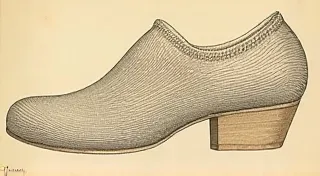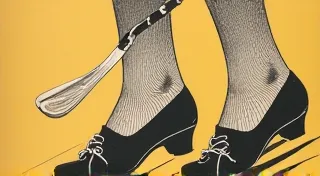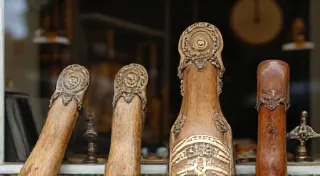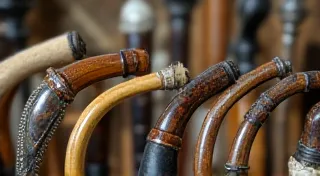Caring for Your Vintage Shoehorn Collection: Preservation Tips
Welcome to the fascinating world of collecting vintage shoehorns! More than just tools, these graceful accessories offer a window into fashion history and represent a unique piece of craftsmanship. But owning a collection of vintage shoehorns comes with a responsibility – the duty of care. Proper preservation isn’t just about keeping them looking nice; it’s about safeguarding their value and ensuring they can be enjoyed by future generations. This guide offers expert advice on cleaning, storage, and overall care for your treasured collection.
Understanding the Materials: A Foundation for Preservation
Before diving into cleaning methods, it's crucial to understand the materials commonly found in vintage shoehorns. This knowledge will inform the gentlest and most effective preservation techniques.
- Ivory: Historically, ivory was a popular choice, particularly for handles. It's porous and susceptible to damage from dryness and excessive moisture. Understanding the origins and characteristics of materials like ivory is key to proper care, and can often be tied to the overall design – as seen in articles about shoehorn handles: materials and embellishments.
- Bone: Similar to ivory in its porosity and fragility, bone was also a common material.
- Metal (Silver, Brass, Copper, Steel): Metal shoehorns are prone to tarnishing and corrosion. Silver is particularly sensitive to sulfur compounds in the air.
- Wood: Wood can warp, crack, or become brittle with age and fluctuating humidity.
- Celluloid/Early Plastics: These materials are notoriously unstable and prone to cracking and discoloration.
- Bakelite: A more durable early plastic, though still requiring care.
Cleaning Your Vintage Shoehorns: A Gentle Approach
Cleaning should be approached with caution and always start with the gentlest method possible. Avoid harsh chemicals and abrasive materials at all costs.
General Cleaning Guidelines
- Dusting: Regular dusting with a soft, clean cloth (microfiber is excellent) is the first line of defense against dirt and grime. Do this at least monthly.
- Surface Cleaning (Non-Metal): For ivory, bone, and wood, a very lightly dampened cloth (distilled water is best) can be used. Dry immediately with a clean, soft cloth. Never soak these materials.
- Metal Cleaning: Specific metal cleaning methods are detailed below.
- Testing: Always test any cleaning method on a small, inconspicuous area first to ensure it doesn’t cause damage.
Material-Specific Cleaning Methods
- Silver Shoehorns: Use a silver polishing cloth specifically designed for antiques. Gently rub the surface to remove tarnish. Avoid harsh silver dips, as they can strip the surface and damage intricate details.
- Brass/Copper Shoehorns: A gentle brass/copper cleaner can be used, following the manufacturer's instructions. Rinse thoroughly with distilled water and dry completely.
- Steel Shoehorns: Often require only a soft cloth and gentle soap. Avoid abrasive cleaners that can scratch the surface.
- Ivory/Bone Shoehorns: These are best cleaned with a very slightly dampened cloth of distilled water, then dried immediately. A specialized ivory cleaner (available from antique preservation suppliers) can be used sparingly, following the instructions carefully.
- Wood Shoehorns: Similar to ivory and bone, a very lightly dampened cloth and immediate drying are key. Avoid using any wax or polish unless specifically formulated for antiques.
- Celluloid/Early Plastics: These are extremely delicate. Dusting with a soft cloth is the safest option. If cleaning is absolutely necessary, use distilled water only, and dry immediately.
- Bakelite: Can be cleaned with a slightly damp cloth and mild soap. Dry thoroughly.
The artistry and design of vintage shoehorns were often influenced by prevailing aesthetic movements. The glamorous Art Deco era, for example, left a distinct mark on shoehorn design, showcasing geometric patterns and luxurious materials. Those interested in tracing these influences might find our article on the influence of Art Deco on shoehorn design particularly enlightening.
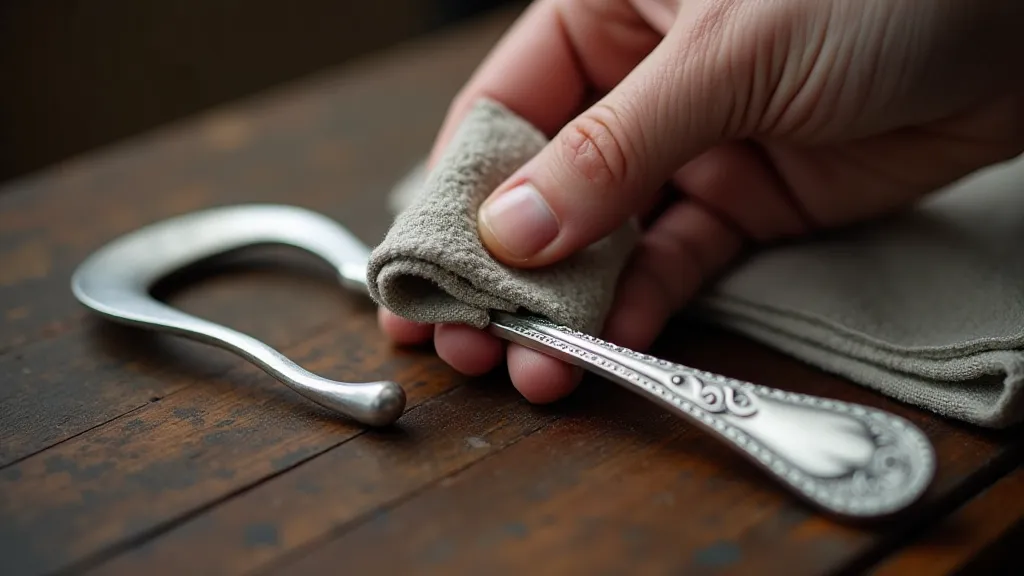
Storage: Protecting Your Investment
Proper storage is vital to preventing damage and preserving the condition of your vintage shoehorns. Consider these guidelines:
- Environment: Store your shoehorns in a cool, dry place, away from direct sunlight and extreme temperature fluctuations. Humidity is a major enemy, so a dehumidifier may be necessary in humid climates.
- Individual Protection: Wrap each shoehorn individually in acid-free tissue paper or muslin. This protects against scratches and dust.
- Storage Containers: Store wrapped shoehorns in acid-free boxes or archival-quality containers. Avoid cardboard boxes, as they can release harmful chemicals.
- Orientation: Store shoehorns horizontally to prevent warping, especially if they have wooden handles.
- Display Cases: If displaying your collection, use glass display cases with UV-protective glass to minimize light damage.
Addressing Specific Concerns
Certain issues are more common with vintage shoehorns and require specific attention.
- Cracking/Splitting: Often seen in ivory, bone, and early plastics. These materials are inherently fragile. Handle with extreme care and avoid stress on the material. Consult a professional conservator for stabilization if the cracking is severe.
- Tarnishing: A natural process for metal shoehorns. Regular gentle cleaning can minimize tarnishing.
- Warping: Primarily affects wooden handles. Maintaining stable humidity levels and storing the shoehorn horizontally can help prevent warping.
- Discoloration: Can be caused by exposure to light or chemicals. Store shoehorns away from direct sunlight and avoid contact with harsh chemicals.

Valuing Your Collection
Beyond preservation, understanding the factors that contribute to the value of your vintage shoehorns can be incredibly rewarding. The rarity of a particular material, the presence of intricate embellishments, and the maker's mark all play a significant role in determining price. If you're curious about what contributes to a shoehorn's worth, explore our detailed guide on the value of vintage shoehorns: factors affecting price.
Decoding the Markings
Many vintage shoehorns bear markings, which can be fascinating clues to their origins and history. These markings might include maker's marks, hallmarks indicating precious metal content, or patent dates. Deciphering these markings requires some detective work, but it can unlock a wealth of information about your collection. Our article on the markings on vintage shoehorns: understanding hallmarks and makers provides a comprehensive guide to identifying and interpreting these important details.
Seeking Professional Help
For valuable or fragile shoehorns, consider consulting a professional conservator specializing in antiques. They can provide expert advice on cleaning, stabilization, and restoration.
Preventative Maintenance: The Key to Longevity
The best preservation strategy is preventative maintenance. Regular dusting, careful handling, and proper storage will significantly extend the lifespan of your vintage shoehorn collection.
Enjoying Your Collection Responsibly
Remember, collecting vintage shoehorns is about more than just acquisition; it's about stewardship. By following these preservation tips, you can ensure that your collection remains a source of beauty and historical significance for generations to come.
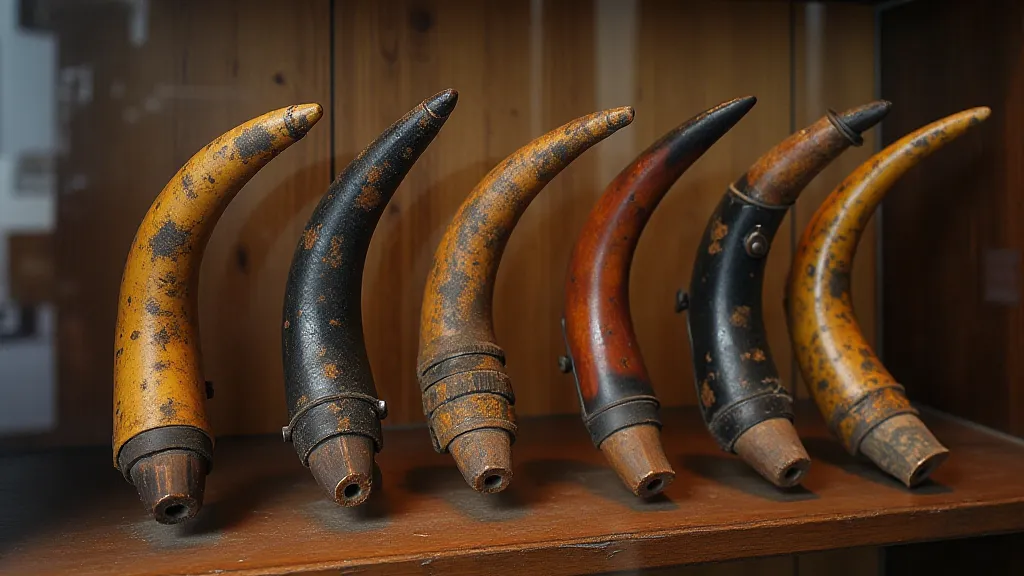
Happy collecting!
